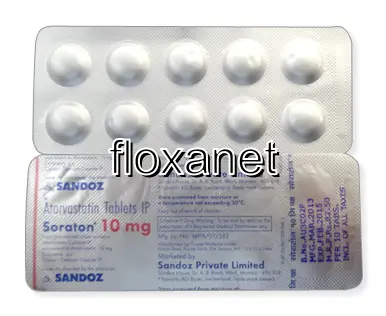| Package | Dosage | Price | Price per Dose | |
|---|---|---|---|---|
| Dosage: 10mg | ||||
| 180 pill | 10mg | NZD200.06 | NZD1.11 | |
| 120 pill | 10mg | NZD149.43 | NZD1.25 | |
| 90 pill | 10mg | NZD120.51 | NZD1.35 | |
| 60 pill | 10mg | NZD91.58 | NZD1.52 | |
| 30 pill | 10mg | NZD48.19 | NZD1.64 | |
| 10 pill | 10mg | NZD21.67 | NZD2.07 | |
| Dosage: 20mg | ||||
| 180 pill | 20mg | NZD269.97 | NZD1.49 | |
| 120 pill | 20mg | NZD200.06 | NZD1.66 | |
| 90 pill | 20mg | NZD166.31 | NZD1.86 | |
| 60 pill | 20mg | NZD127.74 | NZD2.12 | |
| 30 pill | 20mg | NZD72.29 | NZD2.39 | |
| 10 pill | 20mg | NZD28.90 | NZD2.80 | |
| Dosage: 40mg | ||||
| 180 pill | 40mg | NZD429.07 | NZD2.39 | |
| 120 pill | 40mg | NZD323.00 | NZD2.70 | |
| 90 pill | 40mg | NZD272.38 | NZD3.01 | |
| 60 pill | 40mg | NZD204.88 | NZD3.42 | |
| 30 pill | 40mg | NZD113.28 | NZD3.74 | |

Atorvastatin Description
Overview of Atorvastatin
Atorvastatin is a widely used medication designed to help lower cholesterol levels in the blood. It belongs to the class of drugs known as statins, which work by inhibiting an enzyme involved in the production of cholesterol in the liver. This medication is often prescribed to individuals at risk of cardiovascular disease, including those with high LDL cholesterol, triglycerides, or other risk factors such as diabetes or hypertension. Its primary goal is to reduce the risk of heart attacks, strokes, and other vascular diseases by managing cholesterol levels more effectively.
How It Works
Atorvastatin operates by blocking the action of HMG-CoA reductase, a key enzyme in the cholesterol biosynthesis pathway. By doing so, it decreases the production of bad cholesterol (LDL) and slightly increases good cholesterol (HDL). The result is a clear improvement in the lipid profile, which is a crucial factor in preventing the buildup of plaques in arteries. The medication starts showing effects within a few days of beginning treatment, but maximum benefits are typically observed after several weeks.
Benefits and Effectiveness
Many users report significant reductions in LDL cholesterol after consistent use of Atorvastatin. It is effective in both primary prevention, by reducing the risk of developing cardiovascular diseases, and secondary prevention, by decreasing the chances of recurrent events in individuals with existing heart conditions. Besides lowering bad cholesterol, Atorvastatin has been associated with modest increases in HDL levels, providing additional cardiovascular protection. Its long-term use has been associated with a reduced incidence of heart attacks, strokes, and other related complications.
Possible Side Effects
Although Atorvastatin is generally well tolerated, some users may experience side effects. Common issues include muscle pain, weakness, and gastrointestinal problems such as nausea or diarrhea. In rare cases, more serious complications like liver enzyme elevations or muscle damage (rhabdomyolysis) can occur. It is important to monitor liver function periodically during treatment. Patients should inform their healthcare provider about any unusual symptoms, especially muscle pain or weakness, which could indicate more severe side effects.
Precautions and Interactions
Before starting Atorvastatin, patients should disclose their full medical history, including liver problems, alcohol use, or history of muscle disorders. Certain medications, such as other lipid-lowering agents, antibiotics, or antifungals, can interact with Atorvastatin, increasing the risk of side effects. Alcohol consumption should be limited to reduce the risk of liver damage. Pregnant or breastfeeding women should avoid using this medication unless prescribed by a healthcare professional. Regular blood tests are recommended to monitor cholesterol levels and liver health during therapy.
Usage Recommendations
Atorvastatin is typically taken once daily, with or without food. The dosage depends on the individual's cholesterol levels, overall health, and response to treatment. It is crucial to adhere strictly to the prescribed dose and to maintain a healthy lifestyle alongside medication, including a balanced diet and regular exercise. Abrupt discontinuation without medical advice is discouraged, as the benefits are maximized through consistent use. Regular follow-up appointments allow for adjustments in dosage and monitoring of any adverse effects.
Conclusion
Atorvastatin remains one of the most effective medications for managing high cholesterol and reducing the risk of cardiovascular events. Its ability to lower LDL cholesterol significantly has made it a cornerstone in preventive cardiology. While it offers many benefits, users should be aware of potential side effects and follow their healthcare provider's guidance for safe and effective use. Proper monitoring and lifestyle modifications complement the medication’s benefits, helping patients achieve optimal health outcomes.
